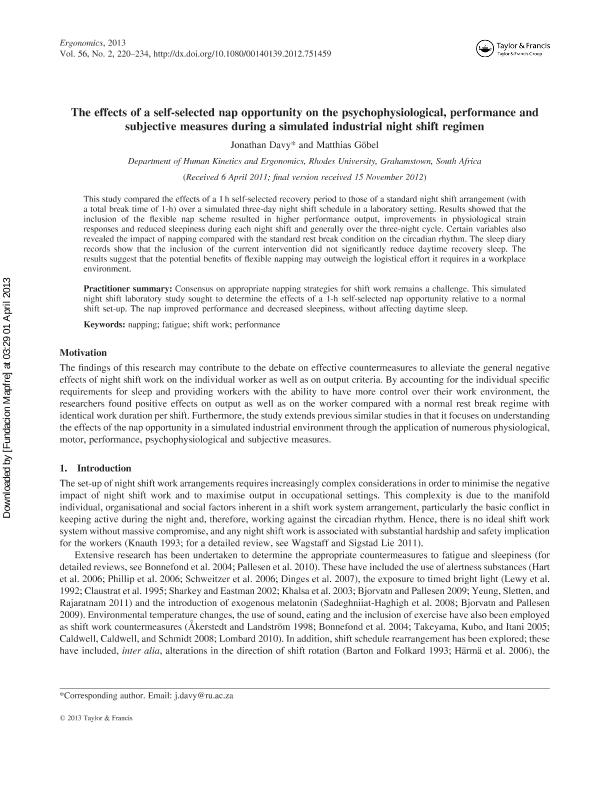The Effects of a self-selected nap opportunity on the psychophysiological, performance and subjective measures during a simulated industrial night shift regimen

Contenido multimedia no disponible por derechos de autor o por acceso restringido. Contacte con la institución para más información.
| Tag | 1 | 2 | Value |
|---|---|---|---|
| LDR | 00000cab a2200000 4500 | ||
| 001 | MAP20130010779 | ||
| 003 | MAP | ||
| 005 | 20130401175652.0 | ||
| 008 | 130401e20130204esp|||p |0|||b|spa d | ||
| 040 | $aMAP$bspa$dMAP | ||
| 084 | $a875 | ||
| 100 | 1 | $0MAPA20130004211$aDavy, Jonathan | |
| 245 | 1 | 4 | $aThe Effects of a self-selected nap opportunity on the psychophysiological, performance and subjective measures during a simulated industrial night shift regimen$cJonathan Davy, Matthias Göbel |
| 520 | $aThis study compared the effects of a 1 h self-selected recovery period to those of a standard night shift arrangement (with a total break time of 1-h) over a simulated three-day night shift schedule in a laboratory setting. Results showed that the inclusion of the flexible nap scheme resulted in higher performance output, improvements in physiological strain responses and reduced sleepiness during each night shift and generally over the three-night cycle. Certain variables also revealed the impact of napping compared with the standard rest break condition on the circadian rhythm. The sleep diary records show that the inclusion of the current intervention did not significantly reduce daytime recovery sleep. The results suggest that the potential benefits of flexible napping may outweigh the logistical effort it requires in a workplace environment. | ||
| 773 | 0 | $wMAP20100019818$tErgonomics : the international journal of research and practice in human factors and ergonomics$dOxon [United Kingdom] : Taylor & Francis, 2010-$x0014-0139$g04/02/2013 Volumen 56 Número 2 - febrero 2013 , p. 220-234 |

